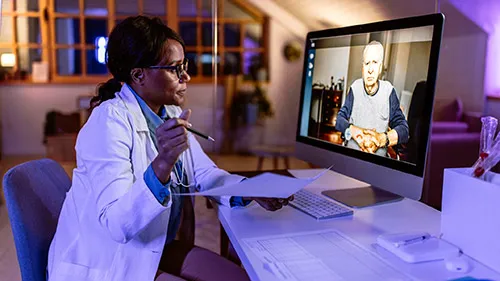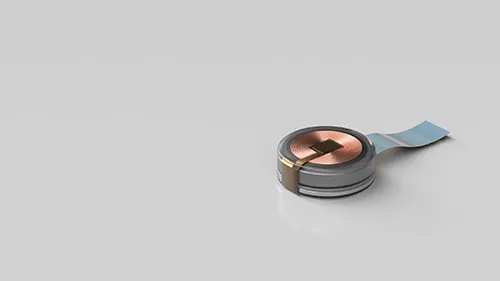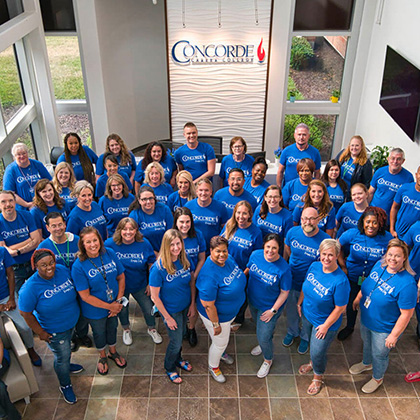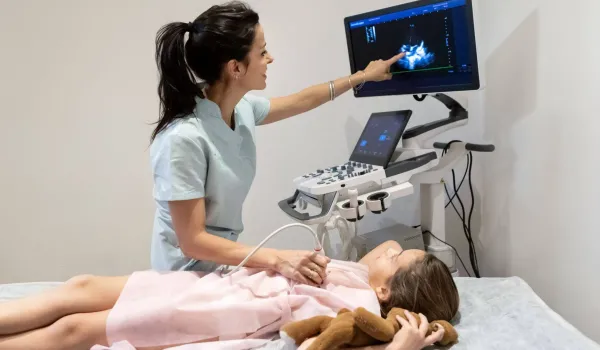Concorde Staff

Technological advancements in many fields lead to the development of new practices. For those that are customer-oriented, these new technologies can improve the quality and speed of customer service. Even for systems that aren't customer-based, advancing technology encourages professionals to continue developing in their respective fields. In the medical field, technology can make diagnosing and treating patients easier. Below is a description of medical technology and a list of 12 technologies that are improving patient treatment and recovery and helping medical professionals excel in their careers.
What Is Medical Technology?

How Technology Has Advanced Health Care
Medical technology refers to the tools, resources, and technological systems medical professionals use to diagnose, understand, and treat patients. There are a variety of medical technologies that professionals use that are readily accepted by the community. These include machine tools such as X-ray machines, MRIs, and other advancements designed to improve the health of the general population such as vaccines and health wearables. There are five distinct areas of technology in the medical industry, which are:
- Prevention: These are technologies that help the general population prevent illnesses and injuries.
- Diagnosis: These technologies help medical professionals identify illnesses and injuries in patients.
- Monitoring: These technologies monitor existing health conditions and can alert someone to important changes in the conditions.
- Treatment: These are technologies that aid in treating illnesses and injuries.
- Care: These technologies help people recover faster after medical procedures or long-term illnesses.
Recent mRNA Advancements
Messenger ribonucleic acid, or mRNA, is an RNA molecule that carries genetic information. Advancements in understanding this operator of the body have led to improved treatments and decreased costs for treatments. One of the primary advancements in this technology is the advent of mRNA vaccines, such as some of the vaccines for COVID-19. But the application for these technologies is much larger and includes the ability to help the human body create antibodies to defend against a variety of communicable diseases. The reduced cost and the speed of development can make mRNA technology a staple of disease prevention and care.
Virtual Reality
Virtual reality has applications in many areas, including education, entertainment, and real estate. Beyond these uses, however, are its applications to the medical industry. Medical professionals such as psychologists can use VR to treat psychological disorders, such as anxiety and dementia. They can use VR to introduce stimuli to patients and allow them to work through their condition with the help of a psychologist or other medical professional. VR can also help medical professionals study treatments and observe procedures, increasing the quality of patient care.
Neurotechnology

Neurotechnology has been in the medical and wellness fields for some time, but it continues to develop new applications. Medical professionals already use it to understand how the brain functions, including the magnetic fields it produces and the processes it controls in the body. In recent years, the research into neurodevices has increased, leading to animal tests for things such as the Neuralink, a device that can record brain activity on a computer. The aim is to have a device that can provide stimulation for neurological disorders such as Parkinson's and Alzheimer's diseases.
Artificial Intelligence
Artificial intelligence is helping with the prevention of diseases. Currently, AI can recognize patterns faster than medical professionals, making it an excellent tool for identifying generalized disorders that often have a set of specific behaviors. Medical professionals who allow AI to help them diagnose illnesses are often faster than their peers at providing critical medical treatments to their patients and can therefore improve the quality of care that patients receive. AI also has applications for creating new drugs and searching for ways to use existing drugs more effectively.
3D Printing
3D printing has created quite a benefit to the medical field. First, prosthetics can be manufactured faster with the technology, allowing patients to practice with them and recover faster. 3D printing can also create implants and other important components for surgery, allowing wait times to decrease for patients who need critical treatments. Another application of 3D printing is in creating drugs to treat illnesses. For example, the FDA approved its first 3D-printed drug in 2015 (1) to treat epilepsy in the general population.
Precision Medicine
Precision medicine is the art of personalizing treatment for patients. Traditional care usually designed treatment plans based on the previous treatments of other patients, but with precision medicine, a medical professional can meet and understand a patient and then develop treatments for that specific person based on the information they have. Precision medicine affects not only prevention but every aspect of health care, meaning it can have a high degree of accuracy in treatments and consideration for the needs, genetics, and medical history of the patients it affects. Its applications can change how health care is delivered in the future.
CRISPR
Clustered Regularly Interspaced Short Palindromic Repeat (CRISPR) is a technology that allows medical professionals to edit the genes of patients. This can allow advanced prevention and treatment of diseases such as viruses in the human population by removing genes that make people contract these diseases. CRISPR can also allow for the treatment of cancer by removing genes that cause the disease in people. One of the most advanced applications of this technology is to create treatments for rare diseases such as cystic fibrosis, which causes gene mutations in patients.
Telemedicine

Another advancement in medical technology comes from the advent of telehealth and telemedicine. These are systems patients and care providers can use to consult with doctors, nurses, and other medical professionals using computers or phones. Through these systems, a patient can receive diagnoses and other remote clinical services while remaining within their homes. This gives patients the comfort and convenience of having medical access without having to go to the doctor's office, encouraging more people to engage in their health. It also relieves medical facilities of patients, allowing them to have shorter wait times and faster care for emergency cases.
Health Wearables
Health wearables are another technology people are using to monitor their own health. These are devices that are often linked with smartphones and can record different measurements throughout the day. These measurements include steps, distances walked, heart rate, sleep, and other vital statistics. While these systems have been present for a few years, major manufacturers are becoming more interested in them, leading to advancements such as monitoring blood glucose levels. These devices take many forms such as clothing, jewelry, watches, and other wearables. With an abundance of these technologies, medical professionals can study long-term human health with direct, daily data.
Mental Health Technology
Mental health technologies are systems that can minimize the symptoms of different mental health disorders, such as depression. These technologies include apps that can send reminders to engage in activities people enjoy. There are apps that incorporate AI personalities that can listen to and help people engage in therapy sessions and others that can alert someone to a change in their patterns that might be a forewarning of a depressive episode.
These systems can even track changes in people's voices to understand if they're distressed emotionally. The goal of mental health technologies is to ease the burden of changing mental health in the general population.
Robotics
Robotics is something that's also improving the medical field. One of the main ways they do so is by helping medical professionals during surgeries. Instead of a doctor performing surgery directly, a robot controlled by a medical professional can do it instead. This allows for more precise control of the operation, allowing less opportunity for infections to spread, thus limiting the chance that other complications arise during the procedure. Robotics can also help larger medical facilities by automating some processes, allowing faster processing for patients and more time that doctors and surgeons can spend focusing on their patients' treatments.
Nanotechnology
Nanotechnology is an emerging field in medicine. With this technology, small or even microscopic machines can help people improve their health in a variety of ways. Primarily, the machines help defend the body against viruses and other diseases by attacking them the same way a person's immune system might. Nanotechnology can also help medical professionals study the inside of the body and help them perform treatments such as surgeries. This can help improve the quality of an operation while decreasing the recovery time for patients. While this is still a new technology for medicine, it's slowly expanding in its applications.
Now that you've learned about 12 technologies changing the medical field, you can visit the Concorde website, learn about other changes in medicine and health, and learn about programs Concorde offers.
Footnotes:
1. "FDA Approves First 3-D Printed Drug," Forbes, https://www.forbes.com/sites/robertszczerba/2015/08/04/fda-approves-first-3-d-printed-drug/?sh=5513f1845675

Take The Next Step Towards a Brighter Future
We have a Concorde representative ready to talk about what matters most to you. Get answers about start dates, curriculum, financial aid, scholarships and more!



